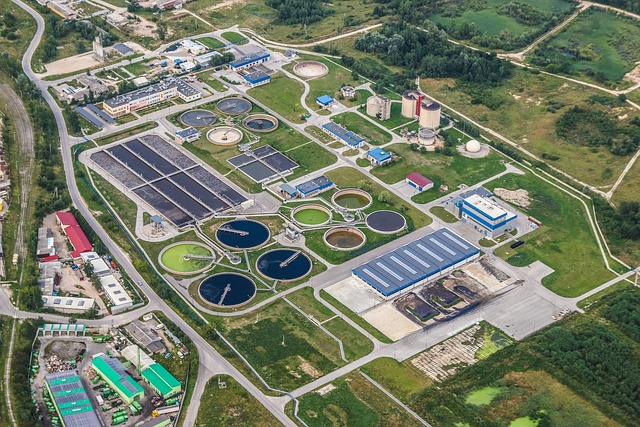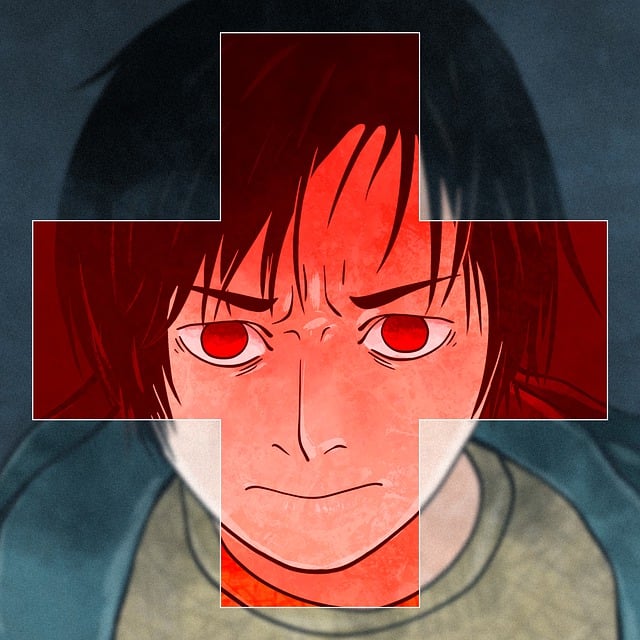Post-Traumatic Stress Disorder (PTSD) is a mental health condition triggered by traumatic events, causing persistent symptoms like flashbacks and nightmares. Various effective traditional therapy approaches include Cognitive Behavioral Therapy (CBT), Exposure Therapy, and Eye Movement Desensitization and Reprocessing (EMDR). Combining these therapies with medication and support groups offers comprehensive PTSD treatment. CBT targets negative thought patterns, while EMDR facilitates brain healing for traumatic memories. Integrating medication stabilizes mood during psychotherapy sessions, improving outcomes. Group therapy provides peer support, empowering recovery. Self-care strategies like exercise, mindfulness, diet, sleep routines enhance healing. Adjustments in PTSD treatment methods are necessary based on current circumstances and trends, ensuring better management of individual cases.
Professional PTSD treatment is a vital step towards healing and recovery from post-traumatic stress disorder. This comprehensive guide explores various effective approaches, from traditional therapy to cutting-edge techniques like Eye Movement Desensitization and Reprocessing (EMDR). We delve into cognitive behavioral therapy (CBT), trauma-focused therapies, medication management, group support, self-care strategies, and long-term prevention. Understanding PTSD and accessing the right treatment can transform lives, offering a path to resilience and well-being.
Understanding Post-Traumatic Stress Disorder (PTSD): Symptoms and Causes

Post-Traumatic Stress Disorder (PTSD) is a mental health condition that can affect individuals after they have experienced or witnessed a traumatic event. It’s more than just feeling scared or anxious; PTSD involves intense, disruptive thoughts and feelings that last for weeks, months, or even years after the trauma. Symptoms include flashbacks, nightmares, severe anxiety, uncontrollable thinking about the event, avoidance of reminders, and heightened irritability or sensitivity.
Causes of PTSD can vary widely, but it often arises from life-threatening situations like military combat, natural disasters, accidents, physical or sexual assault, or witnessing a violent act. The impact of these events can be profound, leading to a range of emotional and psychological responses that, if left untreated, can significantly impair daily functioning. Accessing appropriate PTSD treatment is crucial for managing symptoms and facilitating healing.
Traditional Therapy Approaches for PTSD Treatment

Traditional therapy approaches for PTSD treatment often involve a combination of techniques from various therapeutic modalities. Cognitive Behavioral Therapy (CBT) is one of the most widely used methods, focusing on identifying and changing negative thought patterns and behaviors associated with traumatic memories. Exposure therapy is another common technique where individuals gradually face and process distressing memories to reduce their emotional response over time. These therapies help patients develop coping strategies and rebuild a sense of control after traumatic experiences.
Additionally, Eye Movement Desensitization and Reprocessing (EMDR) has gained recognition as an effective PTSD treatment. EMDR combines exposure therapy with bilateral stimulation, such as side-to-side eye movements or tactile taps, to help individuals process traumatic memories. This approach facilitates the brain’s natural healing process, reducing the intensity of traumatic memories and associated symptoms. Combining these traditional therapies with medication and support groups offers a comprehensive strategy for managing PTSD effectively.
Cognitive Behavioral Therapy (CBT) for Managing PTSD

Cognitive Behavioral Therapy (CBT) is a highly effective approach for managing Post-Traumatic Stress Disorder (PTSD). This evidence-based therapy focuses on identifying and modifying negative thought patterns and behaviors that can exacerbate PTSD symptoms. By challenging distorted cognitions and replacing them with more realistic and adaptive thoughts, CBT helps individuals process traumatic memories and reduce the intensity of associated emotional responses.
During CBT for PTSD, therapists guide patients through exposure therapy, where they gradually confront and process traumatic memories in a safe and controlled environment. This process enables individuals to gain a sense of control over their fears and learn effective coping strategies. By integrating this approach with behavioral techniques, CBT empowers people to manage their symptoms, improve their quality of life, and develop healthier ways of responding to challenging situations.
Eye Movement Desensitization and Reprocessing (EMDR) Technique

Eye Movement Desensitization and Reprocessing (EMDR) is a highly effective technique used in professional PTSD treatment. It’s based on the idea that traumatic memories are stored in our brains differently than ordinary memories, often with intense emotions and physical sensations. EMDR helps individuals process these distressing memories by encouraging bilateral stimulation, typically through side-to-side eye movements, while the person recalls the trauma. This facilitates a shift in the way the brain processes the memory, reducing its emotional intensity.
During an EMDR session, a trained therapist will guide the client through a series of steps, including identifying specific traumatic memories, focusing on them while engaging in bilateral stimulation, and then reevaluating the associated beliefs and emotions. This process allows individuals to desensitize to the trauma, gain new perspectives, and develop healthier coping mechanisms. EMDR has been recognized as an evidence-based treatment for PTSD by various mental health organizations, making it a valuable tool in professional PTSD treatment plans.
Trauma-Focused Therapies: A Comprehensive Look

Trauma-focused therapies have emerged as a critical component in the comprehensive approach to treating Post-Traumatic Stress Disorder (PTSD). These therapeutic methods are designed to help individuals process and overcome the profound effects of traumatic experiences, which can manifest in various symptoms such as flashbacks, nightmares, anxiety, and avoidance behaviors.
One prominent trauma-focused therapy is Eye Movement Desensitization and Reprocessing (EMDR), which assists patients in reliving traumatic memories while simultaneously engaging in bilateral stimulation, typically through side-to-side eye movements or other sensory inputs. This process helps desensitize individuals to the distressing memories and reduce their emotional intensity. Cognitive Behavioral Therapy (CBT) is another effective approach that focuses on identifying and changing negative thought patterns and behaviors associated with trauma. CBT equips patients with coping strategies, enhances their problem-solving skills, and promotes a more adaptive response to traumatic reminders.
Integrating Medication with Psychotherapy for PTSD

In the realm of PTSD treatment, integrating medication with psychotherapy offers a comprehensive approach to managing symptoms. Many individuals suffering from Post-Traumatic Stress Disorder (PTSD) find relief through a combination of these therapeutic modalities. Antidepressant and anti-anxiety medications can help stabilize mood and reduce anxiety, paving the way for more effective psychotherapy sessions. By easing symptoms like irritability, insomnia, and heightened arousal, medication enables individuals to engage more fully in their therapy, enhancing the overall treatment outcome.
This integrated approach leverages the strengths of both medication and psychotherapy. Psychotherapy provides the necessary tools for understanding and processing traumatic memories while medication helps manage the intense emotions that can accompany PTSD. Together, they foster a transformative journey towards healing, offering folks a chance to overcome the challenges posed by this complex disorder and reclaim their lives.
Group Therapy and Peer Support in Recovery

Group therapy is a cornerstone of many PTSD treatment plans. It offers individuals affected by PTSD a safe and supportive environment to connect with others who understand their experiences. In group settings, people can share their stories, gain insights from peers, and learn coping strategies that have worked for them. This collective approach not only enhances the individual’s healing process but also fosters a sense of community and belonging, which is especially beneficial for those dealing with feelings of isolation or shame related to their trauma.
Peer support plays a crucial role in the recovery journey. Individuals who have successfully navigated PTSD can offer invaluable guidance and encouragement to others. These peers provide firsthand accounts of overcoming challenges, fostering hope, and demonstrating that recovery is possible. The connection between individuals who share similar experiences creates a powerful bond, encouraging accountability and motivation within the group. This dynamic reinforces the idea that healing from PTSD is achievable through a combination of professional guidance and the unwavering support of peers.
Self-Care Strategies to Complement Professional Treatment

Complementing professional PTSD treatment with effective self-care strategies can significantly enhance healing and recovery. Engaging in regular physical activity, such as yoga or walking, releases endorphins that promote relaxation and reduce stress levels, creating a conducive environment for healing. Additionally, practicing mindfulness techniques like meditation or deep breathing exercises allows individuals to stay grounded in the present moment, reducing flashbacks and intrusive thoughts.
Nutrition plays a vital role too. A balanced diet rich in essential nutrients supports brain health and overall well-being. Avoiding excessive caffeine and alcohol can also help regulate mood swings and improve sleep quality, which is crucial for managing PTSD symptoms. Establishing a consistent sleep routine and creating a safe, calm living space contribute to a sense of stability and security, further aiding the healing process alongside professional PTSD treatment.
Long-Term Management and Preventing Relapse

Long-term management of PTSD involves a combination of ongoing therapy, self-care practices, and support networks to help individuals maintain their mental health over time. This includes regular sessions with therapists who can provide continued exposure therapy, cognitive processing therapy, or other evidence-based approaches tailored to the individual’s needs. Building coping mechanisms and stress management skills is crucial for preventing relapse.
Additionally, fostering a strong support system through groups or community resources plays a vital role in long-term recovery. Engaging in self-care activities such as exercise, mindfulness practices, and maintaining a consistent routine can also help manage symptoms. By integrating these strategies into daily life, individuals with PTSD can enhance their resilience and better navigate potential triggers, ensuring sustained improvement and reduced risk of relapse.
